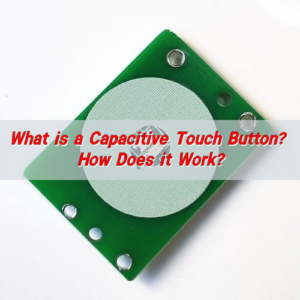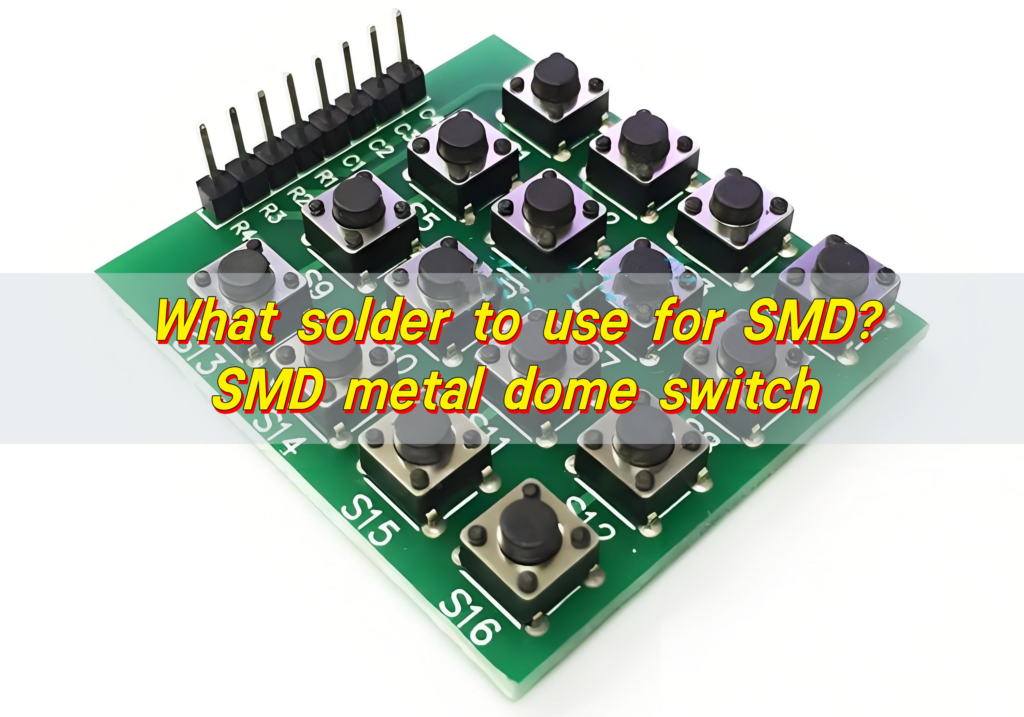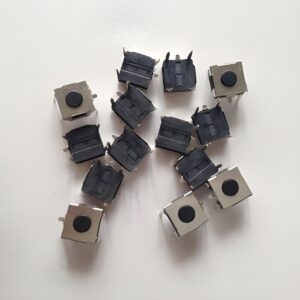SMD (surface mount device) is usually soldered with lead-free solder paste, such as SAC (tin-silver-copper) alloy, which has good wettability and mechanical properties and meets environmental protection requirements.
For SMD metal dome switches, low melting point solder is easy to solder and reduces thermal damage, and high conductivity solder improves performance. Flux is used to improve wettability, and anti-oxidation measures such as nitrogen protection or anti-oxidation coating can improve reliability.
Can you hand solder an SMD dome switch reliably?
Yes, you can absolutely hand solder an SMD dome switch. With the right tools and a steady hand, it’s more than possible.
While many manufacturers use reflow ovens or hot air rework stations, hand soldering is still a solid method for prototypes, repairs, or low-volume builds.
SMD dome switches have delicate structures. Overheating can warp the dome or weaken the adhesive layer. That’s why choosing the right solder for SMD components becomes essential.
Can you use normal solder for smd components?
Standard solder, the kind used for through-hole components, often comes in thicker diameters. That makes it harder to control on tiny SMD pads. It can lead to messy joints or even short circuits.
For SMD components—including SMD metal dome switches—it’s best to stick with solder specifically designed for fine-pitch work. This type of solder flows easier and is easier to control in tight spaces.
If you only have standard solder on hand, you can still make it work by using it sparingly and combining it with flux. However, for consistent quality, stick with dedicated solder for SMD tasks.
What is the best diameter solder for SMD?
The best solder diameter for SMD work is typically between 0.2 mm to 0.5 mm. For extremely fine components or precise metal dome switch pads, you might even go as low as 0.2 mm.
Thinner solder gives you better control. It reduces the risk of adding too much material, which can lead to bridges or blobs. For dome switches where tactile precision is critical, clean soldering is non-negotiable.
What solder works best for SMD metal dome switches?
Lead-free solder is commonly used due to environmental regulations, but it has a higher melting point. This means more heat on your dome switch, which isn’t ideal.
Sn63/Pb37 (63% tin, 37% lead) solder is often considered the best solder for SMD applications, especially dome switches. It melts quickly, flows smoothly, and results in strong joints with minimal thermal stress.
Combine it with a no-clean flux core and you’re in great shape. You avoid extra cleaning steps and reduce the risk of damage to delicate switch structures.
For reflow soldering or hot air tools, make sure your solder paste or wire has consistent melting behavior. This ensures even distribution and strong adhesion.
What’s the best solder paste for SMD dome components?
Solder paste is essential for consistent results. It’s especially useful when working with SMD dome switch assemblies where alignment and pad contact are critical.
The best solder paste for SMD work should have:
- Consistent particle size for even application
- Low viscosity for smooth stencil printing
- Strong wetting properties for tight contact
- Stable flux that activates quickly and leaves minimal residue
For dome switches, avoid overly aggressive fluxes. They might corrode or interfere with switch function.
Make sure to store your solder paste properly. Always keep it refrigerated and bring it to room temperature before use. Expired or poorly stored paste can ruin your joints.
Is flux necessary for soldering SMD metal dome switches?
Yes. 100% yes. You should never skip flux when soldering dome switches—or any SMD components for that matter.
Flux removes oxidation from metal surfaces. It helps the solder flow and bond correctly. Without it, you’ll get cold joints or uneven connections.
Use a no-clean flux if you’re worried about residue, especially under sensitive dome structures. So whether you’re hand soldering or using a reflow oven, make sure you’ve got the best solder flux for SMD ready to go.
Do I need flux for SMD soldering?
if you’re soldering SMD dome switches, then yes, flux is absolutely required.
SMD soldering happens on small, flat pads that are prone to oxidation. Even a little contamination can ruin your joint. Flux ensures the solder flows where it should—and not where it shouldn’t.
Without flux, you’ll spend more time fixing problems than creating solid connections.
SMT vs. SMD soldering: What’s the key difference in process?
SMD stands for Surface Mount Device. It refers to the actual component—like a dome switch designed to be mounted directly on the PCB.
SMT, or Surface Mount Technology, is the broader term for the process used to solder those components.
So in simple terms:
SMD = the component
SMT = the process used to solder it
In SMT soldering, automated machines apply solder paste and place components before running the board through a reflow oven. It’s fast, consistent, and ideal for large-scale production.
Hand solder SMD tasks, on the other hand, are often used for prototypes, repairs, or custom builds. This process requires careful attention, the right tools, and strong technique.
For SMD dome switches, both methods work well. But if you’re aiming for high volume, automated SMT is the way to go. For precision or quick fixes, hand soldering works just fine—if done properly.
Which tools make SMD soldering easier?
Fine-tipped soldering iron: Essential for accurate work on small pads
- Hot air rework station: Great for removing or placing SMD components
- Tweezers: Helps position tiny switches accurately
- Magnifier or microscope: Lets you inspect joints without guesswork
- Solder wick: For cleaning up mistakes or extra solder
Using a SMD soldering iron with adjustable temperature is ideal. Set it between 260–320°C for leaded solder, and 300–360°C for lead-free.
Conclusion:
Soldering SMD dome switches isn’t just about melting metal—it’s about precision, consistency, and care. Choosing the right solder, flux, and paste ensures long-lasting performance and clean electrical contacts.
Still have questions or need help choosing the right materials for your next dome switch project? Reach out to us anytime at sales@metal-domes.com








